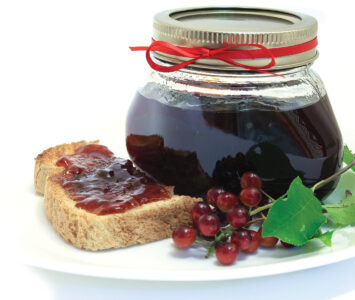Home dyeing can be a gamble if you are new to the idea, but even if you are experienced in the art, knowing the reaction difference between animal fibers and plant based fibers can be crucial to proper dye absorption. Using The Handbook of Natural Plant Dyes (Timber Press, 2010) Sasha Duerr walks you through using mordants and natural dyes in perfect harmony. Use the recipe in this excerpt to learn how to dye wool fiber and create a basic alum mordant.
Basic Alum Mordant Recipe
You can prepare alum mordant for hot dyeing, cold dyeing, or solar dyeing. This recipe gives instructions for the hot-dyeing method. Weigh the fiber you are going to dye when it is dry, and then measure the alum in proportion to the fiber’s dry weight. Weigh the alum on a scale to get the proper amount. Before dyeing a natural fiber, soak it in water for at least a half-hour before putting it in the dye bath.
When using wool fiber, make sure the water temperature gradually rises or lowers, so the fiber can get used to the change. For most items, hang to dry. For delicate items like knitted wool sweaters and garments, it’s best to lay them flat to dry so they keep their shape and don’t stretch.
4 ounces (113 g) wool fiber
8 percent (1 1/2 teaspoons) alum to weight of fiber
Cream of tartar to weight of fiber
Soak the wool fiber in a bowl of water for at least 1 hour.
Place the alum and cream of tartar in a cup, add some boiling water, and stir to dissolve. Add the alum and cream of tartar mixture to a dye pot full of enough water to cover your fiber, and stir.
To the dye pot, add the previously soaked fiber you wish to mordant.
Place your dye pot on a burner. Bring the mordant solution to a simmer, 180 degrees Fahrenheit (82 degrees Celsius), and simmer for 1 hour. Turn off the heat under the dye pot, and remove the fiber from the dye pot or allow the fibers to steep overnight.
Wash the fiber in water the same temperature as the dye bath with pH-neutral soap to remove unfixed mordant. Rinse the fiber thoroughly until the water runs clear, and hang to dry.
The spent alum bath can be disposed of down the drain (unless it is flows to a septic tank), along with plenty of running water. You can also pour the alum bath around your acid-loving plants.
Use mordants and aftermordants for your home dyeing projects. Read Using Mordants With Natural Plant Dyes for more recipes and tips from Sasha Duerr.
This excerpt has been reprinted with permission from The Handbook of Natural Plant Dyes: Personalize Your Craft With Organic Colors From Acorns, Blackberries, Coffee and Other Everyday Ingredients, published by Timber Press, 2010.








